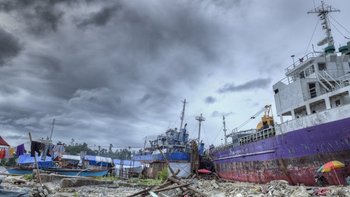When super typhoon Haiyan hit Visayas in the Philippines in November 2013, I reviewed my report on national capacity building for disaster management to see if my analysis appeared to still be appropriate. Yolanda had exacted such extensive damage to life and property. How could a disaster like this occur in a middle-income country with significantly strengthened capacity for disaster management?
The Philippines and other countries that I examined in this report (Mozambique, El Salvador and Indonesia), have indeed achieved significant progress in strengthening their national capacity for disaster management. Although the process within each of the countries has varied, most have strong legislation, clearly defined national and sub-national institutional responsibilities, and protocols for requesting and coordinating international assistance. Communities and civil society actors are integrally involved in the national system, and participate actively in local risk reduction, response and recovery.
ALNAP’s recently released study Learning from disaster suggests this is not the whole picture, though. The report, which sheds light into how National Disaster Management Agencies (NDMAs) learn, finds NDMA performance is highly variable and often constrained by lack of resources, with only the better-resourced NDMAs having a systematic approach to organisational learning. It also highlights structural and operational barriers to learning and improvement, as NDMAs are compromised by short-term political planning horizons and frequent staff rotations.
This goes in line with one of the biggest lessons from my research: the importance of understanding that capacity strengthening is multi-faceted and is a long-term process. Beneath the “headline” achievements lie elements that require continued attention and support. In many ways, these gaps revolve around the effective mainstreaming of disaster risk reduction and management into laws, policies, institutions and community. This should be done in a way that endures in spite of human and institutional cycles, such as the migration of community members and the rotation of elected officials.
Last week I visited Tacloban City in the Philippines and had opportunity to further reflect on my conclusions in the “Experiences of National Governments…” report. It is tricky to analyze what the Yolanda disaster says about national capacity, because even in spite of the losses, the community and the local government did many things well prior to Yolanda’s hitting land. This visit reaffirmed for me the importance of considering capacity strengthening to be a multi-faceted goal, which is best done with the persistent support of local, national and international partners. The actual strengthening of capacity after all is not isolated to periods before or after disasters, to the national or local level, or to a number of calendar years. It is a process that needs to become integral to governance and to community function, and a way of life. In this context, it is ever more important for national and international actors to collaborate on effective and thorough national capacity strengthening, and for donors to support this process.
